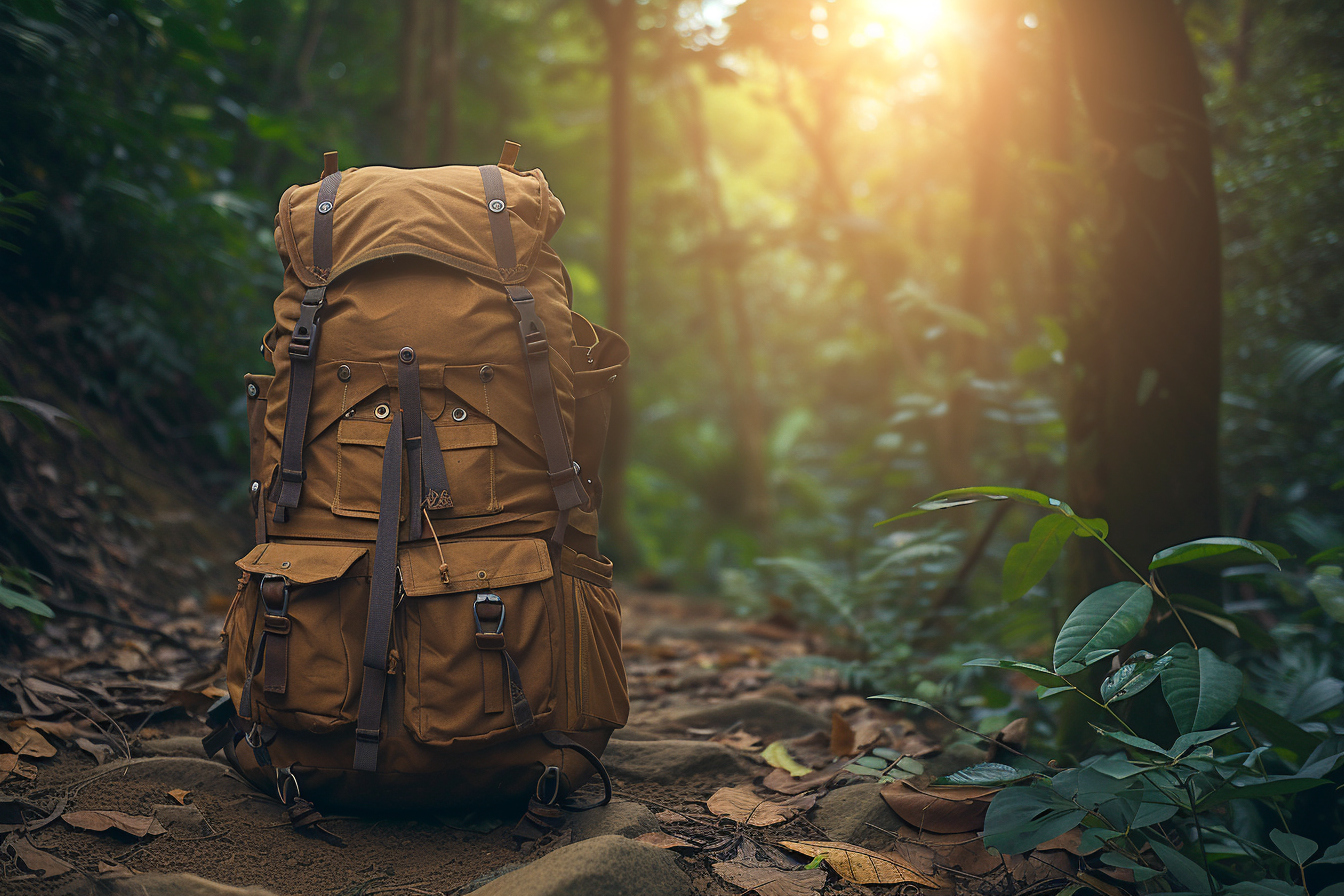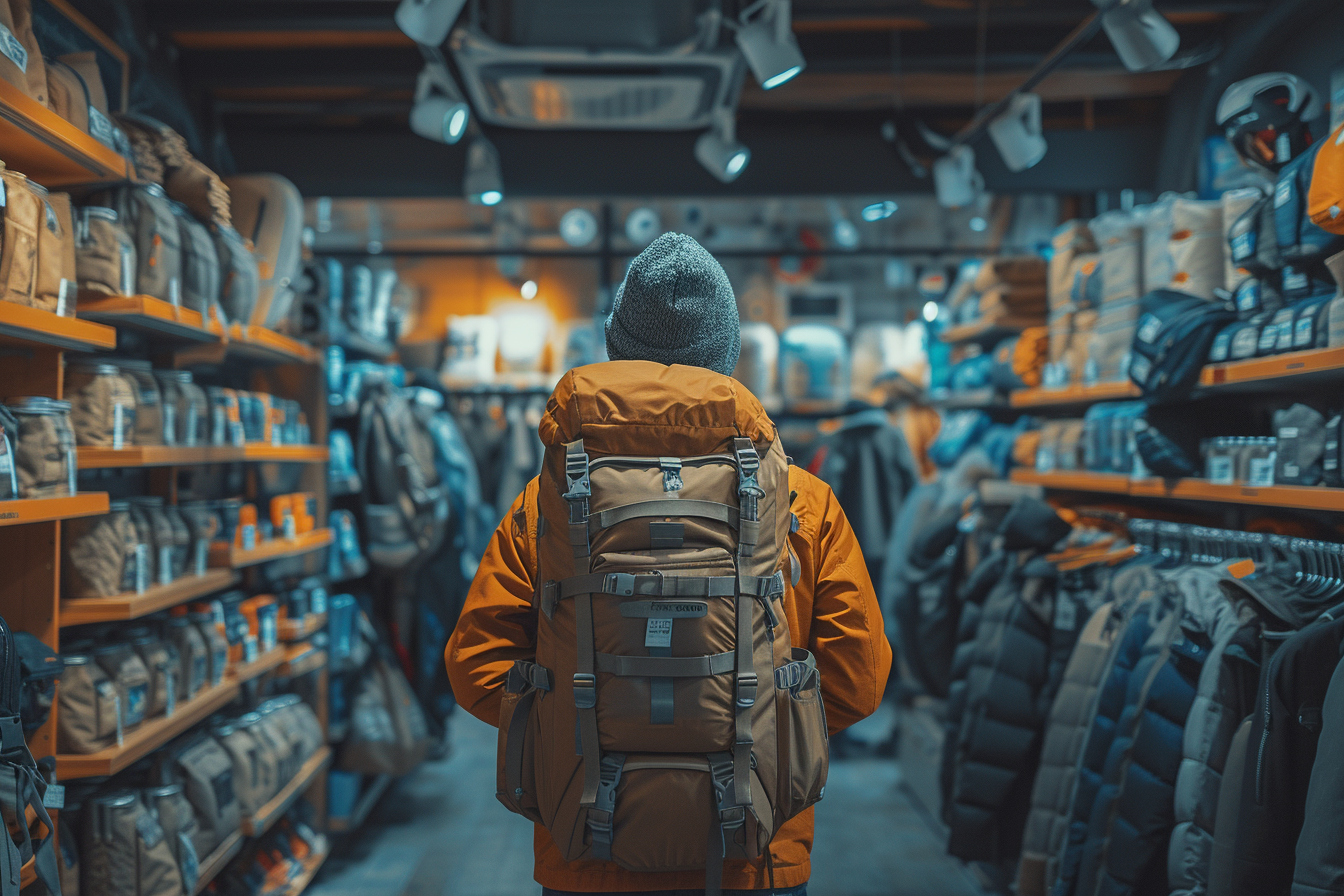Embarking on a hiking adventure can be an exhilarating experience. To ensure that this venture is as enjoyable as possible, having the right gear is paramount. One of the most critical pieces of equipment for any hiker is the hiking backpack. This essential item not only carries your supplies but also needs to suit your body, your trip type, and the conditions you’ll face. This article aims to provide you with detailed insights on how to go about selecting a backpack that will best suit your needs.
Understanding backpack types

Daypacks: If your journeys consist mainly of daily hikes or short trips, a daypack ranging from 20 to 30 liters would often suffice. These are lightweight and are designed for carrying essentials like water, snacks, a first-aid kit, and a rain jacket.
Overnight Backpacks: For one or two nights out in the wilderness, consider an overnight backpack with a capacity of 30 to 50 liters. These packs have enough room for your basics plus a little extra gear or clothing.
Multi-Day Backpacks: When you plan to be on the trail for several days, a multi-day backpack between 50 to 70 liters is appropriate. These are designed to carry more items including additional food, cooking gear, and a more substantial shelter.
Extended-Trip Backpacks: Dedicated to long treks that last five days or more, extended-trip backpacks with a volume of over 70 liters allow for a large variety of gear without sacrificing comfort.
Fit and comfort: the cornerstones of the perfect backpack
The fit of a backpack is as personal as the fit of your shoes. To find a perfect match, pay close attention to the following:
Male vs. Female Designs: Many manufacturers offer women-specific models that are designed to be shorter and narrower with curved shoulder straps and wider, more shaped hip belts to accommodate anatomical differences.
Torso Length, Not Your Height: Backpacks are sized to fit specific torso lengths. Measure your torso from the base of your neck to the top of your hips to ensure you get a pack that sits properly on your back.
Adjustable Suspension: Look for backpacks with an adjustable torso length. This feature allows you to fine-tune the backpack fit, making it a versatile option if the pack is to be used by people of varying sizes.
Hip Belt: The majority of your pack weight should sit on your hips, thus a well-padded and easily adjustable hip belt is crucial for a comfortable hike.
Shoulder Straps: They should wrap comfortably around your shoulders with no pinching or too much space. Padding and adjustability can prevent discomfort during long hikes.
Ventilation: Backpacks that feature a suspended mesh back panel to allow airflow can minimize the sweatiness on your back and increase your overall comfort.
Capacity and accessibility
Analyze the gear you need to bring with you to determine the right pack size. Avoid the temptation to buy a bigger backpack than necessary, as it may invite overpacking, leading to an unnecessarily heavy load.
Accessibility is Key: Look for packs that offer multiple compartments and pockets for easier organization. Top-loading backpacks are common, but a panel loading or a backpack with both top-loading and front-loading options can be more convenient.
Compartmentalization: Features like a sleeping bag compartment, removable daypacks, or hydration sleeves can make a backpack more functional based on specific needs.
Durability and material quality
Rugged trails demand durable gear. The materials from which a backpack is made can determine its robustness and weather resistance.
Nylon and Polyester are popular for their strength to weight ratio, whereas rip-stop variations enhance tear resistance.
Cordura is known for its durability and resistance to abrasions, tears, and scuffs.
Water Resistance: Consider the climate and weather conditions where you will be hiking. While most backpacks come with a rain cover, having a backpack made from water-resistant material or treated with a water repellent can provide additional peace of mind.
Load management and weight distribution
Efficient packing goes hand-in-hand with how a backpack is designed to distribute weight.
Compression Straps: These straps, when tightened, bring the load closer to your center of gravity, improving balance and reducing muscle fatigue.
Load Lifter Straps: Located just above your shoulders, they help to pull the weight of the pack inward and upward, aligning the load with your body’s natural center.
Sternum Strap: This often overlooked feature can be vital as it stabilizes the pack and also helps distribute the weight more evenly across your torso.
Additional features
While the core elements discussed above are paramount, certain added features can enhance the backpack experience.
Built-in Raincover: An easily accessible rain cover can be a lifesaver when the weather turns sour unexpectedly.
Tool Loops and Attachment Points: For those who trek with trekking poles or ice axes, having designated attachment points can be quite beneficial.
Pockets and Holders: Hip belt pockets, water bottle holders, and easy-to-reach pockets can make your life on the trail just a bit more convenient.
Selecting the right hiking backpack is a detailed process that intersects function and fit. By taking the time to assess your needs, measure your torso, and choose features that enhance your comfort on the trail, you strengthen the foundation for a successful and enjoyable trek. Remember to balance capacity with the necessity and prioritize durability and comfort to make your backpack a reliable companion on countless adventures ahead. With thoughtful planning and these detailed insights, you’re ready to venture into the array of options before you and find that perfect hiking backpack tailored just for you.

